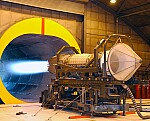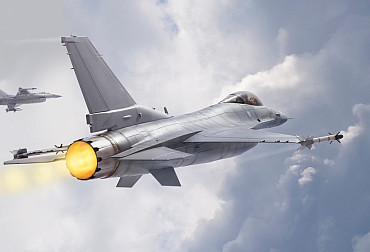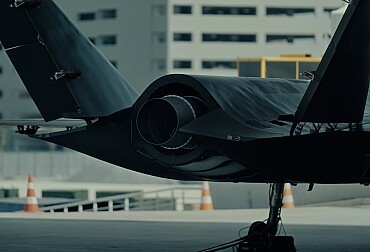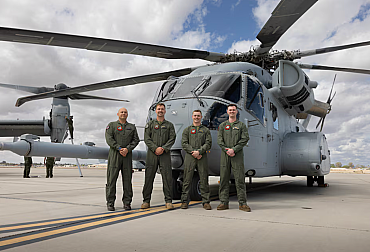China’s mysterious 6th-Generation Fighter Jet spotted flying over busy highway
A short, blurry video showing a futuristic fighter jet flying over a busy Chinese highway has caused a stir on social media and raised new concerns in defense circles. Western analysts have since identified the aircraft as a possible prototype of China’s next-generation stealth fighter, unofficially labeled the J-36.
The six-second video, which first appeared on Chinese social media platforms earlier this week, shows a sleek, tailless jet with a distinctive three-engine configuration soaring low over a highway near Chengdu. The location is significant—Chengdu Aircraft Industry Group, a major Chinese defense contractor located in Sichuan Province, is believed to be the manufacturer behind the mysterious aircraft.
Although the exact date of the footage remains unclear, the sighting has sparked global speculation about the jet’s capabilities and implications for the global balance of air power.
A Radical New Design
According to defense analysts, the aircraft seen in the video appears to represent a departure from traditional fighter designs, featuring three engines, no visible tail fins, and an ultra-smooth airframe suggestive of cutting-edge stealth technology.
“The triple-engine layout, with dual intakes under the wings and a dorsal intake behind the cockpit, is highly unconventional,” said David Cenciotti, aviation expert and former Italian Air Force officer, writing for The Aviationist. “Such a configuration could offer advantages in terms of thrust, redundancy, and long-range missile storage in the aircraft’s underbelly.”
The lack of vertical stabilizers (tail fins) suggests high emphasis on radar evasion, making detection by conventional radar systems far more difficult—a key feature of 6th-generation stealth fighters.
Analysts also noted that the aircraft’s silhouette and propulsion design differ sharply from current fifth-generation fighters, such as the U.S. F-22 Raptor and F-35 Lightning II, or China’s own J-20 stealth jet.
Is China Pulling Ahead in 6th-Generation Development?
The video adds fuel to growing speculation that China may be ahead—or at least neck-and-neck—with the United States in developing 6th-generation air combat platforms.
While the Chinese government has made no official comment on the J-36 or other related programs, this is not the first time signs of secretive next-gen aircraft have emerged. In December, when the first images of the J-36 prototype leaked, analysts also noted the appearance of another tailless, twin-engine stealth jet, unofficially labeled the J-XX or J-50.
These aircraft are believed to be part of a dual-track development effort by the People’s Liberation Army Air Force (PLAAF) to prepare for future air dominance scenarios in the Indo-Pacific.
By contrast, U.S. 6th-generation efforts have only recently entered the spotlight. Last month, U.S. President Donald Trump announced that aerospace giant Boeing had secured the contract to develop America’s 6th-generation fighter, designated the F-47. According to Trump, the prototype of the F-47 has existed for over five years, although no images or detailed specifications have been released publicly.
What Makes a 6th-Generation Fighter?
Although definitions vary, 6th-generation fighters are expected to exceed their predecessors in several critical areas:
-
Advanced stealth and electronic warfare capabilities
-
Artificial intelligence-assisted piloting and decision-making
-
Optional manned/unmanned operation
-
Network-centric warfare integration
-
Directed energy weapons (e.g., lasers)
-
Extended range and endurance
The J-36’s unusual design seems to reflect many of these ambitions, particularly stealth, propulsion power, and internal weapons capacity.
Strategic Implications
If confirmed to be operational or near-operational, the J-36 could represent a major leap in Chinese air power, with potential to challenge U.S. and allied air superiority in the Indo-Pacific. Its development also underscores China’s commitment to leapfrogging traditional technological cycles in pursuit of dominance in future conflicts.
“Even if this is just a prototype, the mere fact that it’s flying shows China is serious about contesting the skies in the 2030s and beyond,” one Western defense analyst noted.
The video also raises questions about how soon China might deploy such fighters in real-world scenarios—and whether U.S. efforts, such as the F-47, will be ready in time to maintain air dominance in increasingly contested airspaces.
The Fog of Stealth
As with many Chinese military programs, a veil of secrecy surrounds the development timeline, operational goals, and production plans for aircraft like the J-36. What is certain, however, is that the appearance of next-gen fighters in open airspace—even if only briefly—sends a deliberate message: China is not only keeping pace with Western aerospace innovation, it may be racing ahead.









